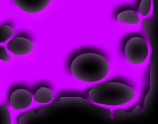|
|
|
About Us
|
 |
|
WE are an Non Profitable Association, all our services are FREE, we just ask a yearly
membership fee.
We will accept all kind of donation for our Hilltribe assistance programs.
|
 |
|
Our Mission
To bring visitors to our Province, touring and helping kids to practice their English.
You will meet a real Thailand far from crowed turistic areas.The kids need you.
Thai Massage
Something not to be missed
It is thought that the art of massage has been practiced in Thailand since as long ago as 200 BC when
it was introduced from India. Due to its long history, Thai massage is sometime referred to as Thai ancient massage, traditional
Thai massage, Thai bodywork, passive yoga, or assisted yoga. A Thai massage is a surprisingly physical experience because
of its emphasis on stretching and loosening the body. It is designed to help energy flow more freely through the body. A good
massage should therefore leave you rejuvenated, full of beans and ready for the next day's activities.
If you can't
face the rigors of a full Thai massage but still want to pamper yourself after a day's trekking, perhaps a foot massage is
the answer. Reflexology, is a great way to treat the body as a whole. It is believed that by manipulating different parts
of the foot you can cause a reflex action in another part of the body. Not only is a foot massage a great way to relieve sore
foot after a day's sightseeing, it can also treat ailments as diverse as aches and insomnia. Foot massage is offered at hotels,
spas or event airports in Thailand.
|
 |
|
|
 |
|
|
 |
|
|
 |

|
 |
|
Hilltribes in The North
Hilltribe Assistance Program
The
tribes in Nan
Tai-Lue
Lue is
an ethnic group in Tai Lue language group. It origin was in SipSongPanna, Yunnan
in the south of China. Lue has immigrated
to Northern Thailand more than 200 years ago. They live in many districts in Nan.
The old typical Lue culture can be seen from architectural forms of temples such as in Wat Prathat Chae Hang, Wat Phumin and
Wat Nong Bua.
Most of Lue are farmers. They grow rice, other cash crops and animal feeding, handicraft is also well-know
among Lue. Hand-weaving bring quite a good income and local attractions.
There are both nuclear and extended in Lue family
system. After marriage, the couple will live with wife’s family for a few years, then they will separate a new house
in the case of inadequate of labour, the wife will move to live with her husband family forever, but it means that both had
lived in wife family for sometime.
Lue belief system is mingled form, that is they believe in spirit and Buddhism. Traditional
merit making ceremonies are practiced in various chances like Thai in low land.
Mlabri
Mlabri hilltribe , called by villagers in the North because the people
of this tribe do not like to live permanently in one place. That is, they like wandering in jungles to get food by hunting
or picking fruits.
They build huts roofed with leaves to stay while going out to look for food but when there is not enough food
there
and they find it difficult to get food, they always move to other areas when the leaves of the huts roofs just
become yellow. Beside, whenever they see strangers or other tribes, they are suspicious or not trusty and then flee away immediately.
Therefore, they are called Phi Tong Luang but they prefer the name "Mlabri"
Hmong
The
earliest group of the Hmong migrated to Nan area through the South of the Pua District more
than one century ago. They have settled on the high plains near the streams in almost every District of Nan. The present population
is over 9,000 settling down on high and cool land. There are approximately 30 houses in one village, most villagers are relatives.
The house are build on the ground with thatches, or Tao-leaf roofs and woven bamboo walls within window.
The Hmong earns
their living by growing crops, animal farming and hunting, Hmong women make their own batik clothing from marijuana fiber.
They adapt themselves quite well to the low land way of life through the contact with the city people.
The Hmong social
organization is based on patrilineal descent. After marriage, the women live with their husband’s family and worship
their husbands ancestral spirits. Their main belief is animism which plays and important role in the Hmong’s way of
life

Turism and Teaching Volunteering Association * Nan * 55000 Thailand*
|
|

